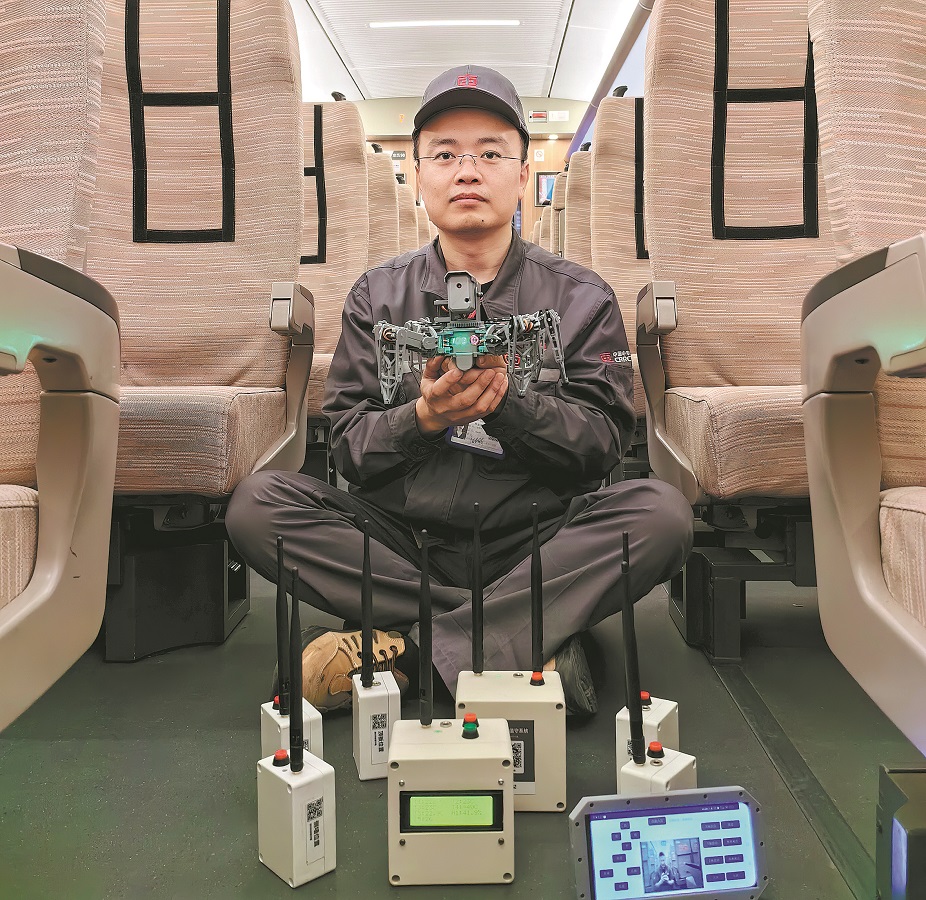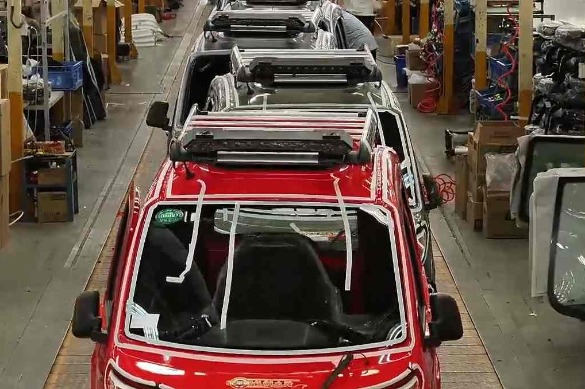Robot helps workers monitor trains


With the help of a six-legged robot, Liu Tianyu and his colleagues can easily finish collecting internal temperature data and check the safety status of high-speed train carriages as they come off the production line.
Liu, 40, head of the diagnostic team of CRRC Changchun Railway Vehicles Co in Changchun, Jilin province, developed the robot to improve their work process.
"The purpose of our team is to test the operating stability of each system of the high-speed trains and their final performance before leaving the factory," Liu said. "With the continuous advancement of technology in high-speed train applications, advanced digitalization and informationization methods must be combined with technological innovation."
As a computer control and mechanical automation major, Liu used his spare time to improve his professional skills in areas such as computer programming, computer-aided design, electronic circuits and 3D modeling.
In 2020, the Fuxing (Rejuvenation) bullet train developed by CRRC Changchun for the Beijing-Zhangjiakou High-Speed Railway entered its debugging phase, requiring stricter testing standards.
To ensure the interior of the carriages could function normally in temperatures of up to 40 C, multiple hot air blowers were needed, while workers collected temperature data and checked the vehicle's status.
"The frequent boarding and disembarking in cramped working environments are both physically demanding for workers and challenges the stability of the test data," Liu said. "Therefore, I wondered whether robots could help us solve those problems."
So Liu started his research.
"Considering the actual operating environment of the machine, which needed to move flexibly between ground cable routes and ensure smooth passage in narrow areas, I chose a spider-like appearance for the robot," he said. "However, due to size restrictions, the robot needed to be lightweight but solid enough."
To minimize unnecessary support structures, Liu made a lattice design, and during the process of choosing its production materials, he turned his attention to 3D printing technology and PLA, a type of plastic made from corn.
"Metal is too expensive to make structural parts and needs a long production cycle," he said. "Moreover, it is difficult to adjust the design."
After the 3D printer completed the final piece, a six-legged robot weighing less than 2 kilograms, capable of remote control and real-time video transmission for 72 hours, was created in June 2023.
Five data collection devices, a computing node and a display terminal were added to the unmanned patrol system. "The robot is only the first version, and there is still a lot of space for improvement," he said.
Han Junhong contributed to this story.
- Beijing hospital promotes clinical trial awareness and participation
- Community cinema: open-air magic in Yinchuan nights
- Drone captures rare moment: Porpoises frolic at sea
- China sets up comprehensive environmental judicial system
- China concludes 232,000 first-instance environment, resources cases in 2023
- May temperatures rise across China


































